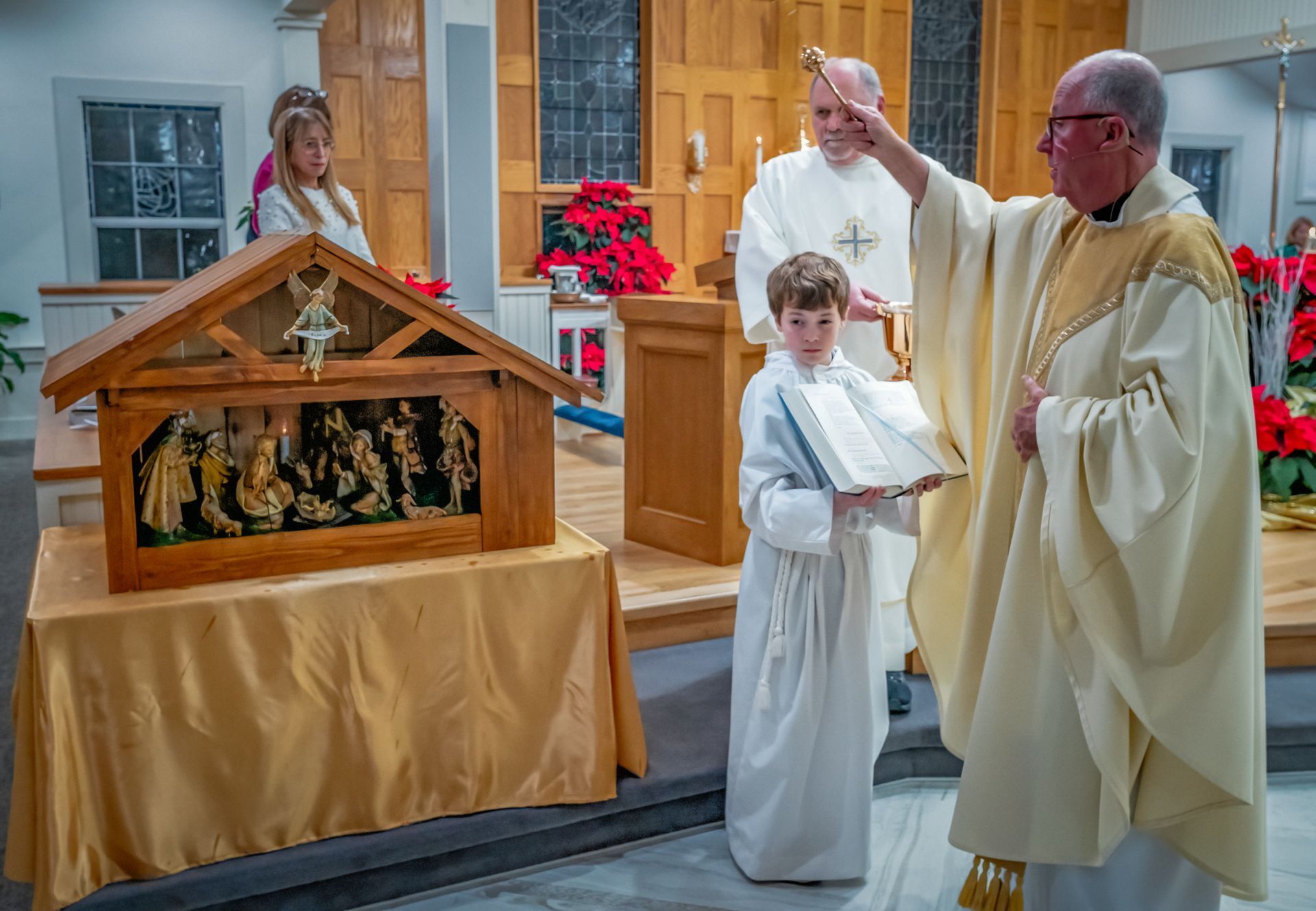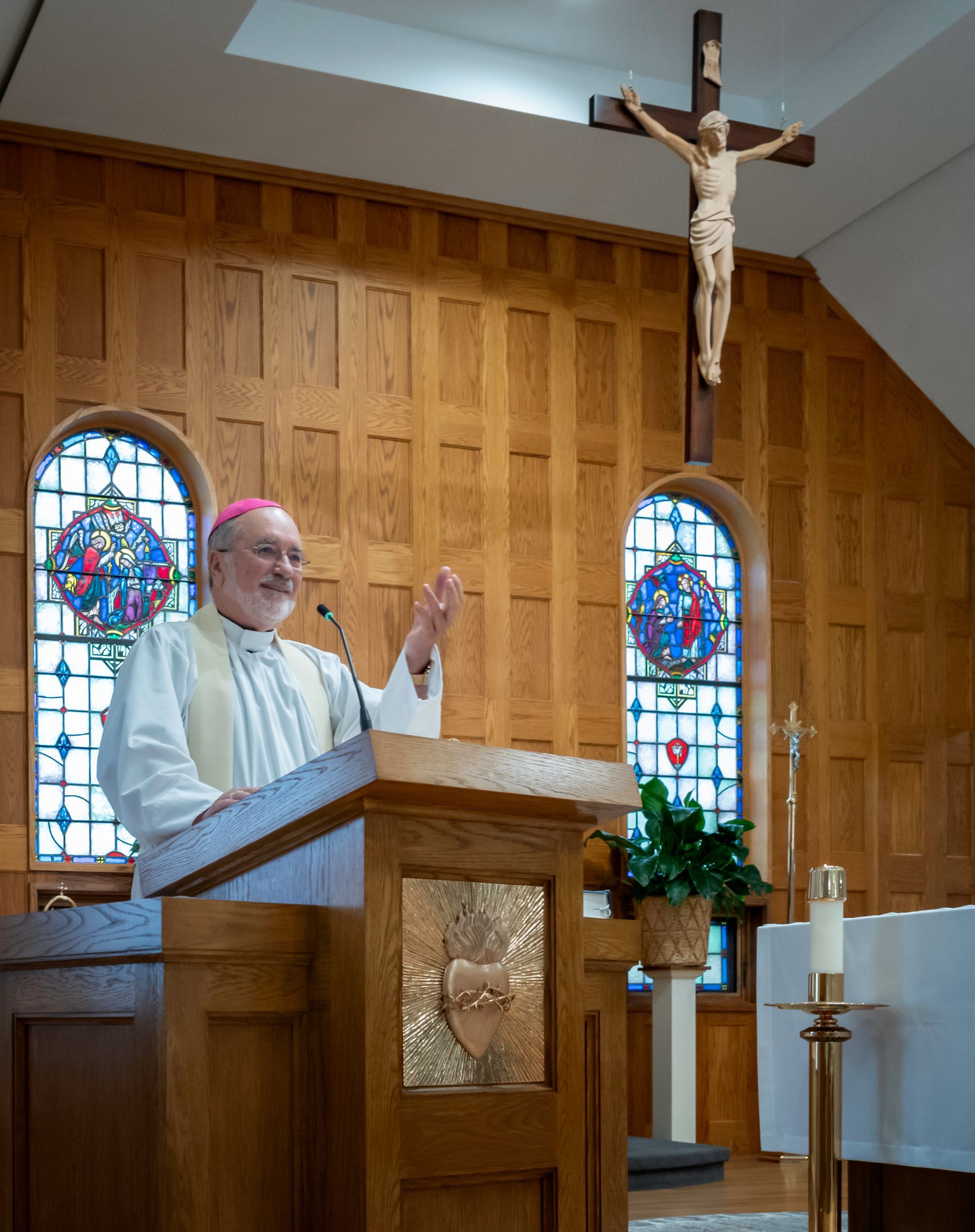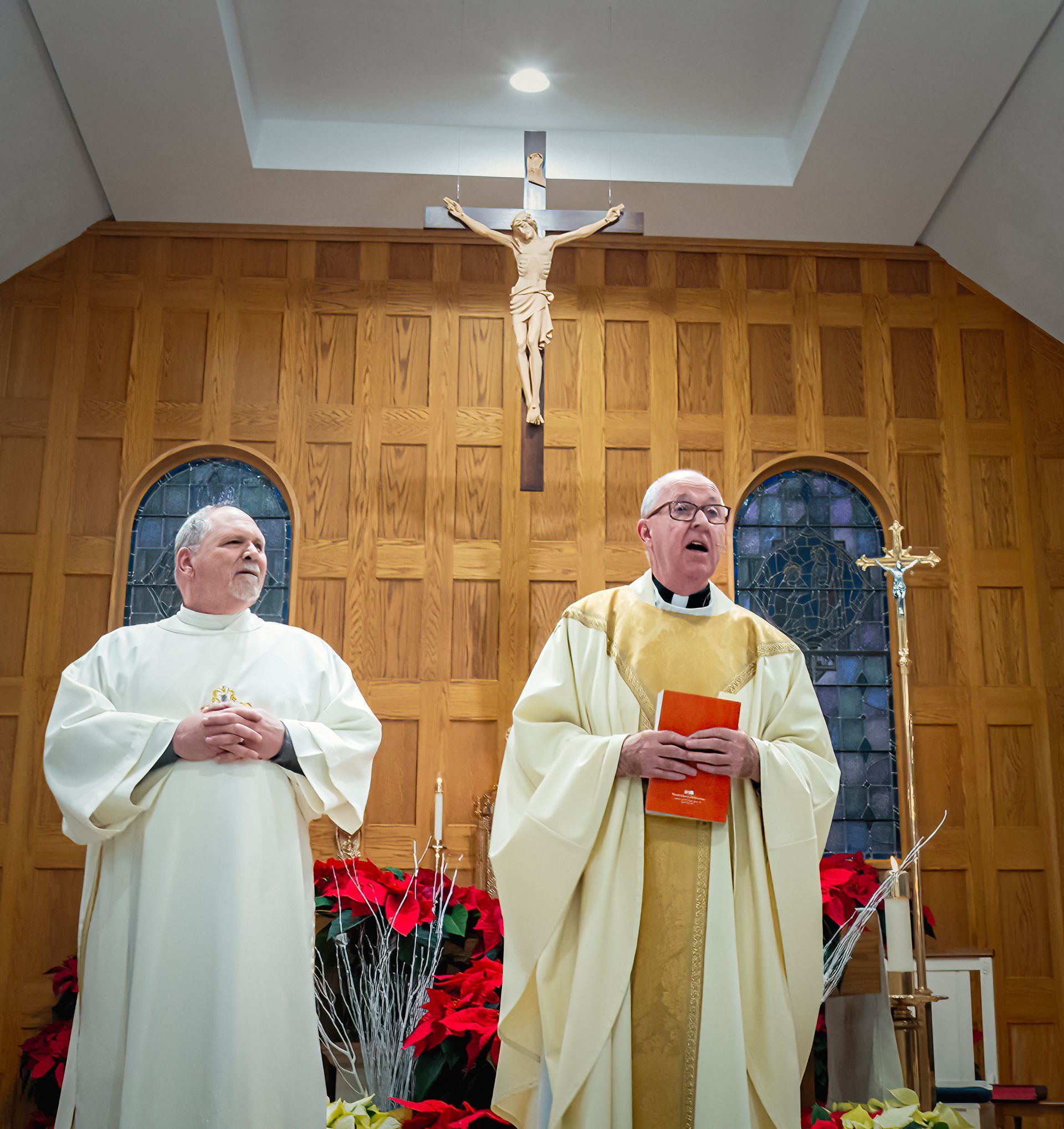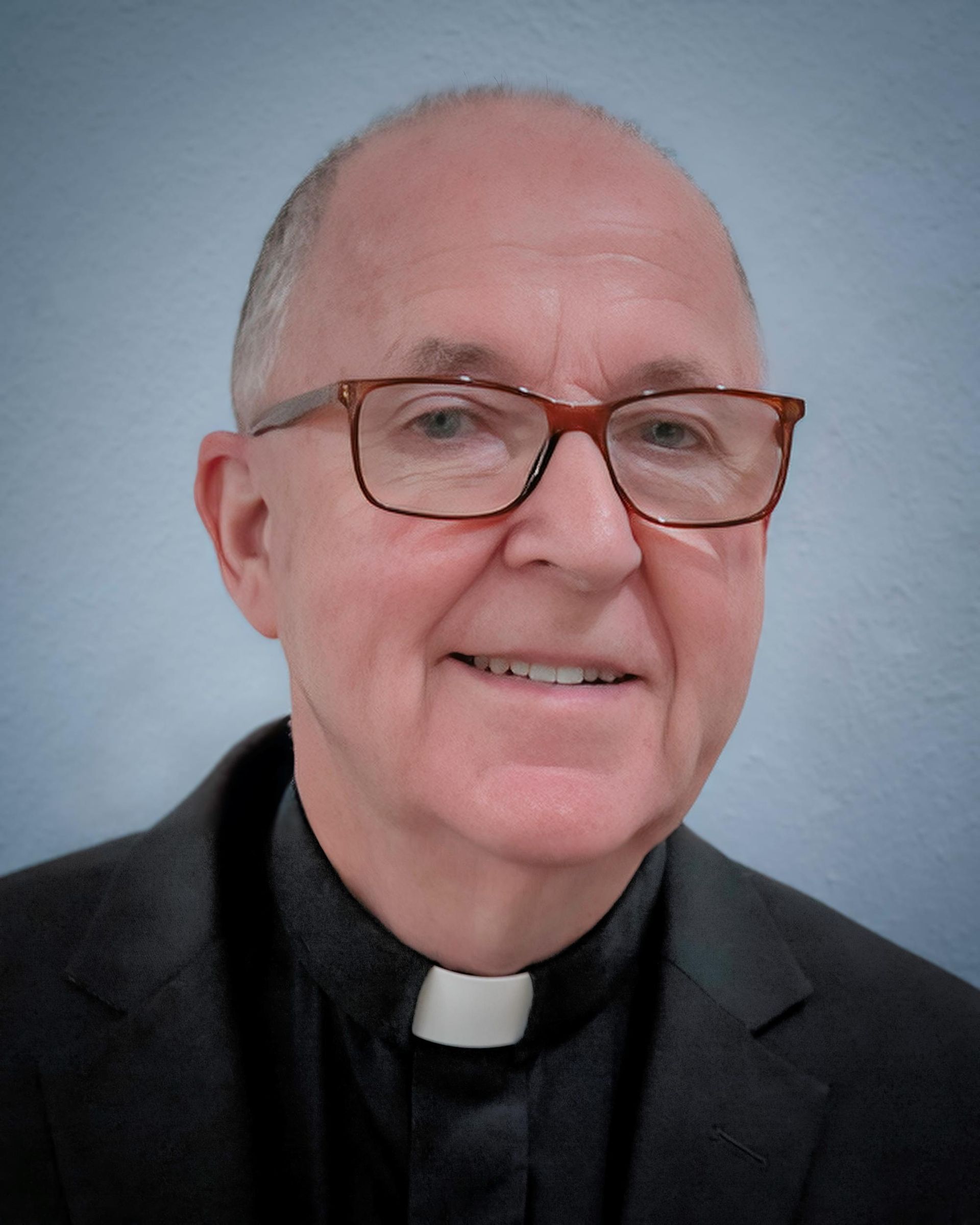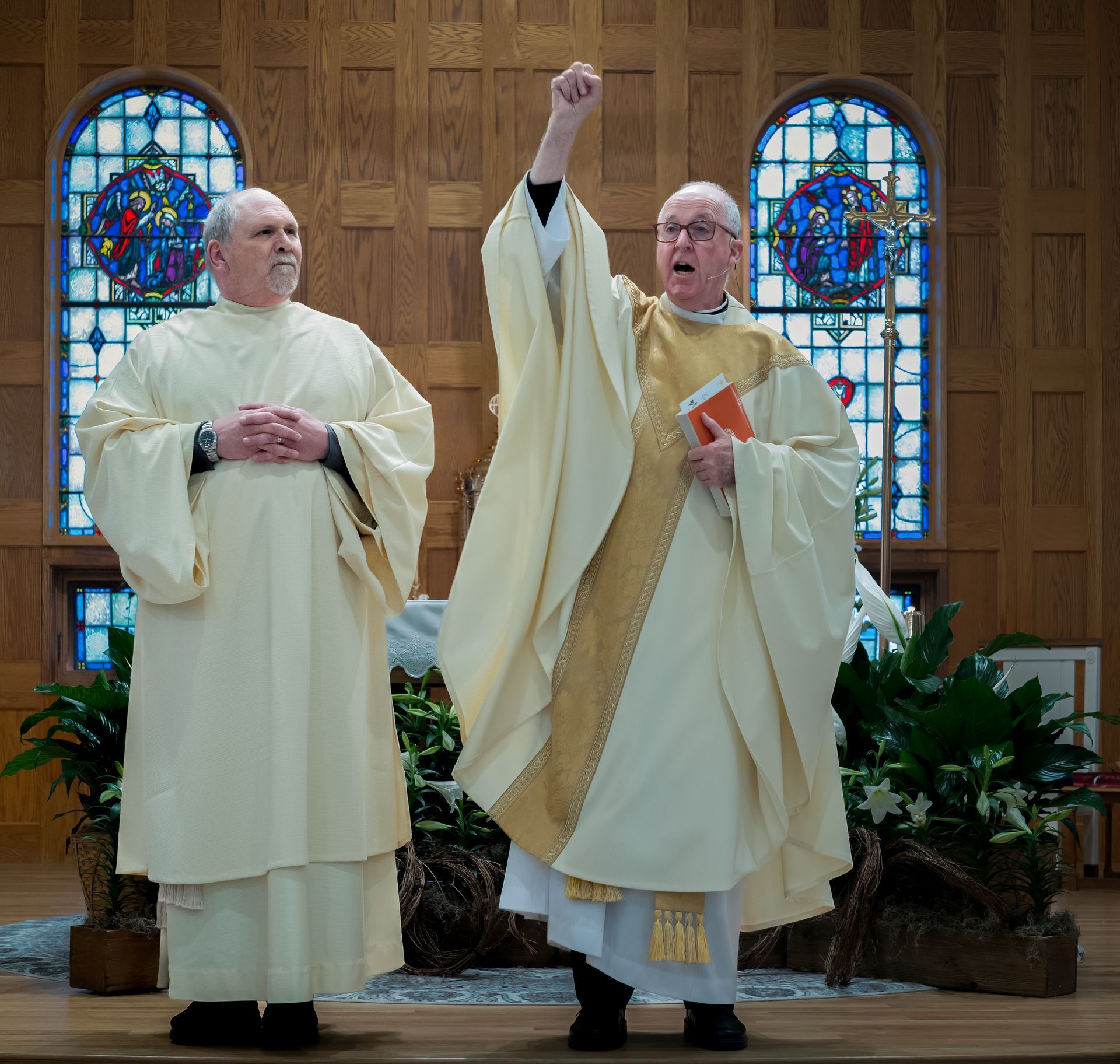From the Pastor Feb 15/16
From the Pastor Feb 15/16
The Real Presence, It’s Real
When doubts about the Real Presence of Christ in the Eucharist are raised, God takes time to remind us Jesus didn’t lie when promised to be with us always. Music Director Teresa Lim and her sister Pat made a pilgrimage to the sites of several Eucharistic miracles in Italy. I asked Pat to write about the pilgrimage. Here are some of her reflections.
Our journey on earth is a pilgrimage to Heaven, our eternal destination, but the opportunity to go on a pilgrimage to another country is a blessing. My sister and I were privileged to join the Diocese of Trenton Eucharistic Pilgrimage to Italy in October. The sites chosen had specific Eucharistic significance or miracles. Our trip included stops in Siena, Lanciano, Assisi, Orvieto, Loretto (Holy House of Mary), Manoppello, and Rome. A special honor was bringing prayers and messages from friends and family to Blessed Carlo Acutis’ shrine in Assisi. I’ll touch on two locations – Siena and Lanciano, where two very different Eucharistic Miracles occurred.
We arrived in Siena for an early morning Mass at 9 am at the Basilica of St Francis. The town of Siena was still waking up. The Eucharistic Miracle of Siena occurred in 1730. On August 14, thieves stole a ciborium and 351 consecrated hosts from the Church of St Francis’ Tabernacle. Two days later, the hosts were found in the alms box of the Church of St Mary of Provenzano. The hosts were returned to the Basilica of St Francis, where they were venerated and remained incorrupt for centuries. Tests show that they were made from churned wheat flour and perfectly preserved. The Church concludes that the hosts are still the Body of Christ.
One can feel the holiness of the Real Presence, especially when the Ciborium, housing the consecrated hosts was revealed. We prayed in pairs in front of the Blessed Sacrament. Then, we went to the chapel next door to celebrate Mass. Fr Martin, our guide, said he was a bit overwhelmed by what he had seen and felt. He asked us to pray to Jesus, as to what we want to leave there in Siena with God and what graces we take with us.
Lanciano is the site of another Eucharistic Miracle, the oldest one dating from the 8th century. Lanciano is a small Italian town with historical and ancient architecture. The main attraction in town is the Eucharistic miracle found in the church of St Francis. Interestingly there are many St Francis churches in the small towns.
We walked to the church along ancient cobblestone streets, including a pathway that was part of the original bridge of Ancient Roman construction. The Eucharistic Miracle of Lanciano dates from the 8th century AD when Lanciano was ancient Anxanum, the city of the Frentanese. For over 12 centuries, it has been believed to be the first and greatest Eucharistic Miracle in the Catholic Church. This event occurred in the little church of St Legontian. It was a divine response to a Basilian monk’s doubts about Jesus’ Real Presence in the Eucharist. During his celebration of Holy Mass, after the two-fold consecration, the host was changed into live Flesh and the wine into real Blood, which coagulated into five globules, irregular and differing in shape and size.
Various ecclesiastical investigations were conducted since 1574. Tests show the host consists of the muscular tissue of the heart. Present are sections of the myocardium, the endocardium, and the vagus nerve. The thickness of the myocardium indicates it is from the heart's left ventricle. The Flesh is “Heart” complete in its essential nature. The Flesh and the Blood have the same blood type, AB. In the Blood were found proteins in the same normal proportions as in the sero-proteic make-up of normal fresh blood.
You can read more about Eucharistic Miracles thanks to soon-to-be saint Blessed Carlo Acutis. He compiled an online database about Eucharistic miracles from around the world. It has become a significant resource for anyone interested in understanding Eucharistic miracles. While in Assisi, we visited his body, which is interned in Assisi’s St Mary Major Church, near the Basilica of St Clare.
It’s Not For the End of Life
Recently, Pope Francis offered his monthly prayer intention for Catholics to understand the Sacrament of the Sick better. Popularly known as the “Last Rites,” Francis pointed out that the sacrament isn’t only for people approaching death but, along with Reconciliation, a sacrament of healing and support in illness.
The purpose of the Sacrament of the Anointing of the Sick is to fill a sick person with God’s grace to help the afflicted person be reminded of the power of prayer. In the celebration of the Sacrament, Jesus presents himself to the ill person as he did in the Gospel’s healing stories. The Anointing signifies Christ’s compassion and hope for the sick. It has the additional effect of bringing strength to family members of the afflicted. It reminds everyone that they are not alone in their suffering.
The Anointing of the Sick offers the ill, special graces by uniting their afflictions to the passion of Christ for their good and that of the whole Church and gives them the strength and peace to endure their suffering and pain in a Christian manner. The anointed person receives conditional forgiveness for their sins, healing, and purification of their soul. It is also preparation for passing into eternal life when that time comes.
On the weekend of March 1 & 2, we will celebrate the Sacrament of the Sick within the context of the Mass. You are a good candidate if you are suffering from a chronic illness, advanced in age with diminishing strength, preparing to undergo surgery (serious enough that you will undergo general anesthesia), or are in danger of death due to illness, injury, or old age.
The last rites are still part of the practice of the Church, but the Anointing of the Sick isn’t considered part of them. The last rites include Reconciliation, Viaticum (Communion), and the Apostolic Blessing. Caregivers shouldn’t wait to encourage the seriously ill to celebrate these sacraments. Call a priest to celebrate them while the sick person is alert enough to ask for absolution and to swallow communion. Spread the word about the correct understanding of last rites and help bring solace to suffering souls.
A Barrage of Issues
Over the last few weeks, the Trump Administration has made decisions with profound implications for vulnerable people worldwide. USAID, the agency responsible for the administration of foreign aid, has been closed. They have implemented strict enforcement against not only undocumented immigrants convicted of serious violent crimes but also non-violent men, women, and children seeking escape from adverse conditions in their home countries. The Catholic Church in America has long worked to ease the suffering of people in less well-developed countries and to help settle immigrants and refugees fleeing their countries.
If you believe these issues should still concern Catholics, consider donating to the two American Catholic organizations working in these areas. For international aid, it is:
Catholic Relief Services
228 W. Lexington Street
Baltimore, MD 21201
For aid to immigrants:
Catholic Charities, USA.
2050 Ballenger Avenue
Alexandria, VA 22314
Fr. Sullivan on Vacation
Like many parishioners, Fr. Sullivan is vacationing in a warmer climate this weekend. Masses will be celebrated by Fr. Rich Furlong, a retired diocese priest, this weekend and all week long. Please welcome Fr. Furlong and pray for Fr. Sullivan to have a safe and relaxing time away.
Bring Us Your Old Palms
Beginning next weekend, we will collect your old palms to burn to make ashes for distribution on Ash Wednesday. Baskets to collect them will be placed in both lobbies. On Sunday, March 2, at 3 p.m., we’ll have a short prayer service to burn the old palms.

